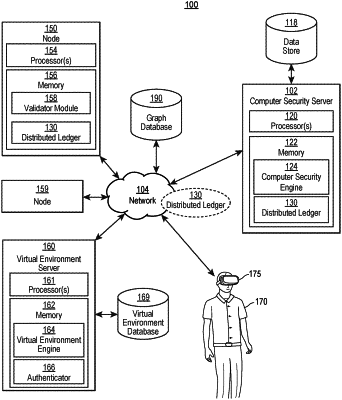| CPC H04L 63/1425 (2013.01) [H04L 63/1416 (2013.01)] | 16 Claims |

|
1. A computer-implemented method for improving security in a virtual environment by determining correlations between events in the virtual environment, the method comprising:
receiving, via one or more processors, data of layers of the virtual environment, wherein the virtual environment is configured to allow a user to interact with a virtual world;
receiving, via the one or more processors, a set of known events including event classifications, wherein the set of known events indicate a plurality of security threats;
detecting, via the one or more processors, events in the data of the layers of the virtual environment; and
determining, via the one or more processors, correlations between the events in the data of the layers of the virtual environment, wherein at least one correlation of the determined correlations is between events of different layers in the virtual environment; and
wherein the layers of the virtual environment comprise:
an experience layer;
a discovery layer;
a creator economy layer;
a spatial computing layer;
a decentralization layer;
a human interface layer;
an infrastructure layer;
an authentication, authorization and integration layer; and/or an identity, and access management layer; and
wherein the method further comprises:
predicting, via the one or more processors, a future event by analyzing the detected events; and
analyzing, via the one or more processors and using a solution machine learning algorithm, the predicted future event to determine a solution to the predicted future event, wherein the solution comprises: temporarily suspending a virtual environment account, permanently disabling the virtual environment account, blocking a message in the virtual environment, adding a warning label to the message in the virtual environment, triggering an audio or visual alarm, and/or alerting law enforcement; and
wherein the determined solution is implemented based on a detected event.
|